Related Research Articles

The Distinguished Order of the Golden Fleece is a Catholic order of chivalry founded in Bruges by Philip the Good, Duke of Burgundy, in 1430, to celebrate his marriage to Isabella of Portugal. Today, two branches of the order exist, namely the Spanish and the Austrian Fleece; the current grand masters are King Felipe VI of Spain and Karl von Habsburg, head of the House of Habsburg-Lorraine, respectively. The Grand Chaplain of the Austrian branch is Cardinal Christoph Schönborn, Archbishop of Vienna.
In the field of sociology, cultural capital comprises the social assets of a person that promote social mobility in a stratified society. Cultural capital functions as a social relation within an economy of practices, and includes the accumulated cultural knowledge that confers social status and power; thus cultural capital comprises the material and symbolic goods, without distinction, that society considers rare and worth seeking. There are three types of cultural capital: (i) embodied capital, (ii) objectified capital, and (iii) institutionalised capital.

The Anrep family is a Baltic-German noble family, belonging also to Swedish and Russian nobility.
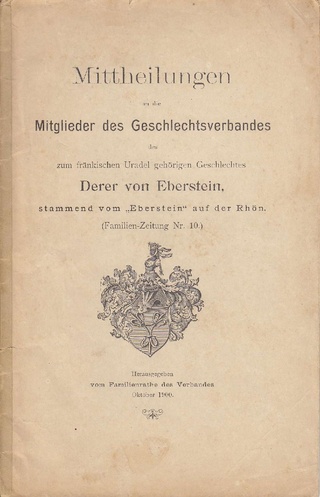
Uradel is a genealogical term introduced in late 18th-century Germany to distinguish those families whose noble rank can be traced to the 14th century or earlier. The word stands opposed to Briefadel, a term used for titles of nobility created in the early modern period or modern history by letters patent. Since the earliest known such letters were issued in the 14th century, those knightly families in northern European nobility whose noble rank predates these are designated Uradel.

The House of Bonda or Bondić was a Ragusan noble family and as such belonged to the Ragusan nobility. A cadet branch became Austrian nobility in 1857.

Wysoczański plural: Wysoczańscy is the surname of a Polish szlachta (nobility) family, which traces its lineage back to Comes Vane Valachus who was granted land in 1431 by Polish King Ladislaus II. Jagiełło. Hereditary Chevaliers of Galicia (“Ritter”) since 1782.
Chevalier Rafał Hugon Maria de Weryha-Wysoczański-Pietrusiewicz is a Polish art historian, genealogist and writer, who was a representative of the auction house Sotheby's.
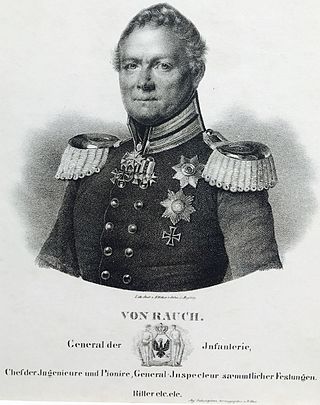
Johann Justus Georg Gustav von Rauch was a Prussian general of the infantry and Minister of War from 1837 to 1841.
Ameli, Princess of Löwenstein-Wertheim-Freudenberg was the daughter of Udo, Prince of Löwenstein-Wertheim-Freudenberg, and widow of Anton-Günther, Duke of Oldenburg, the late pretender to the Grand Duchy of Oldenburg who died on September 20, 2014.

The Arenstorff family, also Arnstorff, is the name of a German noble family of ancient nobility originated from Uckermark, Brandenburg.

The Schirach family or Šěrach is a German noble family of Sorbian origin. Many family members were noted as theologians, lawyers, historians, writers and artists from the 17th century, and several family members have also been noted for their efforts to preserve the Sorbian language. The family was raised to the hereditary Austrian nobility in 1776. Family members are resident in Germany and, since the 19th century, the United States.
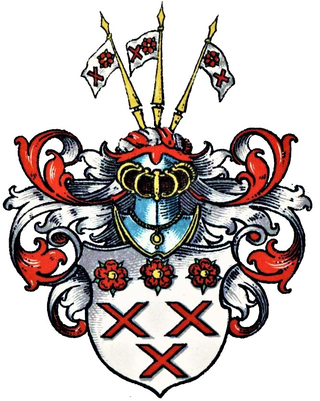
The Dincklage family is a German noble family of Westphalian ancient nobility from Dinklage near Vechta, Lower Saxony. There are currently still two lines of the family: the Campe line and the Schulenburg line. The family is first attested in 1231 with Johannes de Thinclage. The males of the family carry the title Baron or Freiherr.

The Gossler family, including the Berenberg-Gossler branch, is a Hanseatic and partially noble banking family from Hamburg.
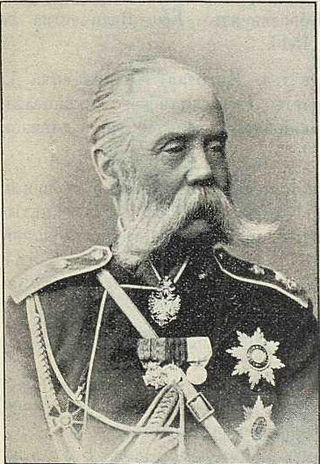
Prince Alexander Magnus Friedrich Barclay de Tolly-Weymarn, born as Alexander Magnus Friedrich von Weymarn, was a Baltic German military commander who served in the Imperial Russian Army.

Alexander Georg Nicolas Schallenberg OMRI is an Austrian diplomat, jurist, and politician who has served as Minister for Foreign Affairs in the government of Chancellor Karl Nehammer since 2021, previously holding the office from 2019 to 2021. A member of the Austrian People's Party (ÖVP), he held the position in the second government of Sebastian Kurz, before briefly serving as Chancellor of Austria as Kurz's successor from 11 October to 6 December 2021.

Noël Le Maresquier was a French architect and one of the most prominent postwar architects of France.

The House of Poschinger is an ancient Bavarian noble family. Its origin date back to the year 1140. The family received the rank of Knights of the Holy Roman Empire. The Frauenau branch rose to the rank of Barons (Freiherr) in the Kingdom of Bavaria and held a hereditary seat in the House of Councillors.
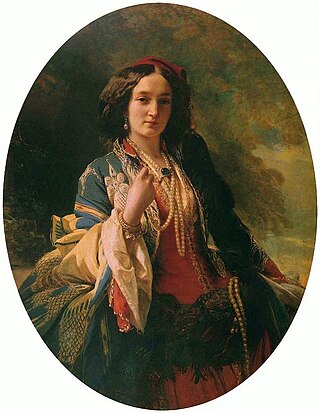
Portrait of Countess Potocka is an oil on canvas painting by German artist Franz Xaver Winterhalter, created in 1854. He was at the time one of the foremost portraitists of Europe's royalty and aristocracy. It is held in the National Museum, in Warsaw.
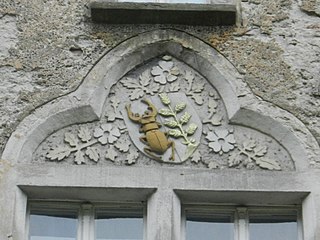
The von Schroeter family is a German noble family originally from the region of Wroclaw.
Rudolf Ernst Alfred Arthur von Bülow was a German diplomat.
References
- ↑ Le Cheval: équitation et sports hippiques (p. 296), Larousse, 1966
- ↑ Town & Country, Vol. 119, No. 4512, pp. 47 and 50
- ↑ Pierre Bourdieu, The State Nobility: Elite Schools in the Field of Power (p. 293), Stanford University Press, 1998
- ↑ Genealogisches Handbuch der gräflichen Häuser[Genealogical Handbook of the Comital Houses]. Genealogisches Handbuch des Adels. Vol. XVIII/139. Limburg an der Lahn: C. A. Starke Verlag. 2006. p. 375. ISBN 3-798-00839-6.